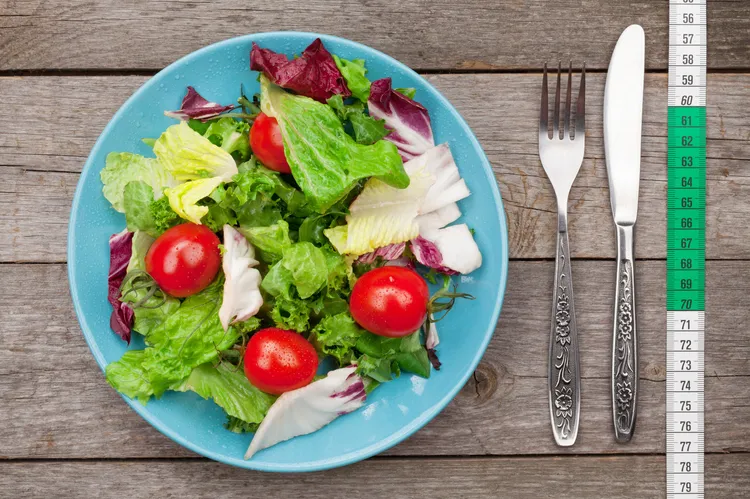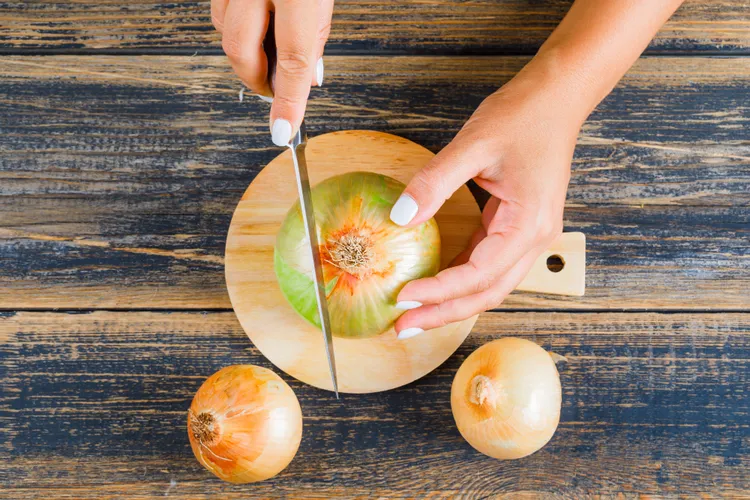10 Practical Tips to Measure and Control Portion Sizes for a Healthier You
In today’s world of oversized plates, supersized fast food, and endless snacking opportunities, keeping portion sizes in check can feel like a daunting task. Yet, mastering portion control is one of the most effective ways to maintain a healthy weight, improve digestion, and feel more energized. Whether you’re aiming to shed a few pounds, manage a health condition, or simply adopt a balanced lifestyle, controlling portion sizes is a game-changer. But how do you know what a “proper” portion looks like? And how can you stick to it without feeling deprived? We’ll share 10 practical tips to measure and control portion sizes, empowering you to eat mindfully and enjoy your meals without overdoing it. From simple tools to mindset shifts, these strategies will help you take charge of your plate and your health.

Why Portion Control Matters
Before we dive into the tips, let’s talk about why portion control is so important. A “portion” is the amount of food you choose to eat at one time, while a “serving” is a standardized amount recommended by dietary guidelines. Unfortunately, modern portion sizes - especially in restaurants and packaged foods - are often much larger than recommended servings, leading to overeating and weight gain.
According to a 2015 study published in the American Journal of Clinical Nutrition, portion sizes for many foods have increased significantly over the past few decades, contributing to the global obesity epidemic. Larger portions can also trick your brain into eating more than you need, as shown in a 2006 study in Psychological Science that found people eat more when served bigger portions, even if they’re not hungrier.
The good news? By mastering portion control, you can enjoy your favorite foods while maintaining balance, supporting weight management, and reducing the risk of chronic diseases like diabetes and heart disease. Ready to get started? Here are 10 tips to measure and control portion sizes that are practical, sustainable, and easy to implement.
10 Tips to Measure and Control Portion Sizes
- Use Smaller Plates and Bowls
Why It Works: The size of your plate can influence how much you eat. A large plate piled with food may look “normal,” but it can hold far more than a healthy portion. Research from Cornell University (2013) shows that people serve themselves less food when using smaller plates, reducing overall calorie intake.
How to Do It:
- Swap oversized dinner plates (10–12 inches) for smaller ones (8–9 inches).
- Use salad plates for main meals and small bowls for snacks like cereal or ice cream.
- Avoid eating straight from large containers (e.g., a bag of chips), as this can lead to mindless overeating.
Choose colorful plates to make meals visually appealing, which can enhance satisfaction even with smaller portions.
- Learn to Eyeball Serving Sizes with Visual Cues
Why It Works: Measuring cups and food scales are great, but they’re not always practical. Using everyday objects as visual cues can help you estimate portion sizes on the go.
How to Do It:
- Protein (e.g., chicken, fish): A 3–4 oz serving is about the size of a deck of cards or the palm of your hand.
- Grains (e.g., rice, pasta): A ½ cup cooked serving is roughly the size of a computer mouse or a clenched fist.
- Vegetables: A 1-cup serving is about the size of a baseball.
- Fats (e.g., nuts, oil): A 1–2 tbsp serving is about the size of a golf ball or your thumb.
Keep a cheat sheet of these visual cues in your kitchen or save an image on your phone for quick reference when dining out.
- Measure Food at Least Once
Why It Works: Measuring your food even once or twice can train your eye to recognize proper portion sizes. A 2014 study in Appetite found that people who regularly measure portions are better at estimating serving sizes over time.
How to Do It:
- Use measuring cups, spoons, or a food scale to portion out foods like rice, pasta, cereal, or snacks.
- Do this for a few meals to get a sense of what a serving looks like on your plate.
- Pay attention to nutrition labels, which list serving sizes (e.g., 1 cup of cereal or 2 tbsp of peanut butter).
Invest in a small, affordable kitchen scale (around $10–$20) for precise measurements, especially for calorie-dense foods like nuts or cheese.
- Follow the “Plate Method”
Why It Works: The plate method is a simple way to balance your meal and control portions without needing to measure everything. It ensures you’re getting a mix of nutrients while keeping portions in check.
How to Do It:
- Fill half your plate with non-starchy vegetables (e.g., spinach, broccoli, peppers).
- Fill one-quarter with lean protein (e.g., chicken, tofu, fish).
- Fill the remaining one-quarter with whole grains or starchy vegetables (e.g., quinoa, sweet potatoes).
- Add a small serving of healthy fats (e.g., a drizzle of olive oil or ¼ avocado).
This method works for most meals and is especially helpful when eating out or at family gatherings.
- Pre-Portion Snacks
Why It Works: Snacking straight from a bag or box is a recipe for overeating. Pre-portioning snacks helps you stick to a reasonable amount and prevents mindless munching.
How to Do It:
- Divide snacks like nuts, popcorn, or crackers into small containers or zip-lock bags.
- Check the serving size on the package (e.g., ¼ cup of almonds = ~200 calories) and portion accordingly.
- Keep pre-portioned snacks in an easily accessible spot for grab-and-go convenience.
Pair snacks with water or herbal tea to increase satiety and reduce the urge to overeat.
- Eat Mindfully
Why It Works: Mindful eating helps you tune into your hunger and fullness cues, making it easier to stop eating when you’re satisfied rather than stuffed. A 2017 study in Obesity Reviews found that mindful eating practices are linked to better portion control and reduced overeating.
How to Do It:
- Eat slowly, taking at least 20 minutes per meal to allow your brain to register fullness.
- Avoid distractions like TV or phones while eating to focus on your food.
- Chew thoroughly and savor the flavors, textures, and aromas of your meal.
Before reaching for seconds, pause for 5-10 minutes to assess whether you’re truly hungry.
- Use Portion-Control Tools
Why It Works: Specialized tools can take the guesswork out of portion control, making it easier to stick to healthy serving sizes.
How to Do It:
- Invest in portion-control plates or bowls with marked sections for protein, grains, and veggies.
- Use a divided bento box for packed lunches to keep portions balanced.
- Try a portion-control spoon or ladle for serving calorie-dense foods like sauces or dressings.
Look for tools with visual guides or measurements printed on them for added convenience.
- Plan Meals Ahead of Time
Why It Works: Planning meals in advance helps you control portions before hunger strikes, reducing the temptation to overeat or make impulsive food choices.
How to Do It:
- Meal prep for the week by portioning out meals into containers with balanced servings of protein, carbs, and veggies.
- Use a meal-planning app or notebook to map out portion sizes based on your nutritional needs.
- Prepare single-serving meals to avoid the temptation of going back for seconds.
Batch-cook grains and proteins, then portion them out with veggies for quick, balanced meals throughout the week.
- Check Restaurant Portions
Why It Works: Restaurant portions are often 2–3 times larger than recommended serving sizes, contributing to overeating. A 2019 study in The BMJ found that restaurant meals frequently exceed calorie recommendations for an entire day.
How to Do It:
- Split an entrée with a friend or ask for a to-go box upfront to save half for later.
- Order appetizers or side dishes instead of a full entrée for a smaller portion.
- Check the menu for “light” or “half-portion” options, which some restaurants offer.
Pair restaurant meals with a side salad or steamed veggies to fill up on low-calorie, nutrient-dense foods.
- Listen to Your Hunger Cues
Why It Works: Your body is designed to signal when it’s hungry or full. Tuning into these cues can prevent overeating and help you eat just the right amount.
How to Do It:
- Use a hunger scale (1 = starving, 10 = stuffed) and aim to eat when you’re at a 3–4 (mildly hungry) and stop at a 6–7 (comfortably full).
- Check in with yourself mid-meal to assess whether you need more food.
- Avoid eating out of habit or boredom - ask yourself, “Am I hungry, or is this emotional eating?”
Keep a food journal for a week to track hunger cues and portion sizes, helping you identify patterns and make adjustments.
Bonus Tips for Long-Term Success
- Stay Consistent, Not Perfect: Portion control doesn’t mean deprivation. Allow yourself treats in moderation to avoid feeling restricted.
- Educate Yourself: Learn about recommended serving sizes for your age, gender, and activity level using resources like the USDA’s MyPlate guidelines.
- Involve Family or Friends: Share portion-control strategies with loved ones to create a supportive environment.
A Sample Day with Portion-Controlled Meals
To put these tips into action, here’s a sample day of portion-controlled meals:
- Breakfast: ½ cup cooked oatmeal (size of a fist) topped with 1 cup berries (baseball) and 1 tbsp chia seeds (thumb).
- Snack: ¼ cup raw almonds (golf ball) and a medium apple.
- Lunch: Plate method - ½ plate mixed greens, ¼ plate grilled chicken (deck of cards), ¼ plate quinoa (fist), drizzled with 1 tbsp olive oil (thumb).
- Snack: 1 cup sliced cucumber and celery (baseball) with 2 tbsp hummus.
- Dinner: ½ plate steamed broccoli and zucchini, ¼ plate baked salmon (palm), ¼ plate sweet potato (fist).
Portion control isn’t just about eating less - it’s about eating smarter. Research shows that smaller portions can reduce calorie intake without sacrificing satisfaction. A 2018 meta-analysis in The American Journal of Clinical Nutrition found that reducing portion sizes led to significant reductions in daily calorie consumption, supporting weight loss and maintenance.
Additionally, portion control aligns with mindful eating practices, which have been shown to improve eating behaviors and reduce the risk of obesity-related conditions. By focusing on quality over quantity, you can nourish your body while enjoying a wide variety of foods.
Mastering portion control is a powerful step toward a healthier, more balanced lifestyle. With these 10 tips to measure and control portion sizes - from using smaller plates to listening to your hunger cues - you can take charge of your eating habits without feeling deprived. Start small, experiment with one or two strategies, and watch how these simple changes add up to big results.
By eating mindfully and prioritizing nutrient-dense foods, you’ll not only feel better but also build a sustainable relationship with food. So, grab a smaller plate, measure that portion, and enjoy your meals with confidence!









